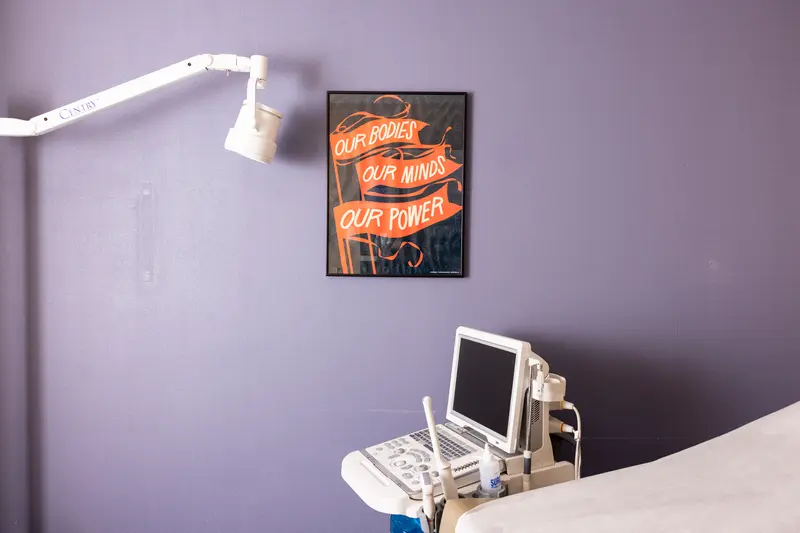Do you have an experience to share related to new abortion laws in your state? Our reporters want to hear from you. Contact us on Signal at 646-389-9881.
For nearly three decades, long before the fall of Roe v. Wade, the blond brick Building for Women in Duluth, Minnesota, has been a destination for patients traveling from other states to get an abortion. They have come from places where abortions were legal but clinics were scarce and from states where restrictive laws have narrowed windows of opportunity.
For many residents of northern and central Wisconsin, and the Upper Peninsula of Michigan, it was faster to head west toward the Minnesota border than to go southeast to clinics in Milwaukee, Green Bay or Madison. Over the years, thousands of pregnant people climbed the stairs of the Building for Women to get abortions at WE Health Clinic, on the second floor.
Treating travelers from other states is nothing new for WE Health or the other abortion providers around the state, but Minnesota’s role as a so-called abortion access island is. The state’s neighbors have either banned abortion, are poised to do so or have severely restricted the procedure.
Data kept by Minnesota shows that white people make up a larger share of those who travel from another state for an abortion than those who seek abortions in state, raising questions about whether certain groups — particularly people of color — will be able to make the trip.
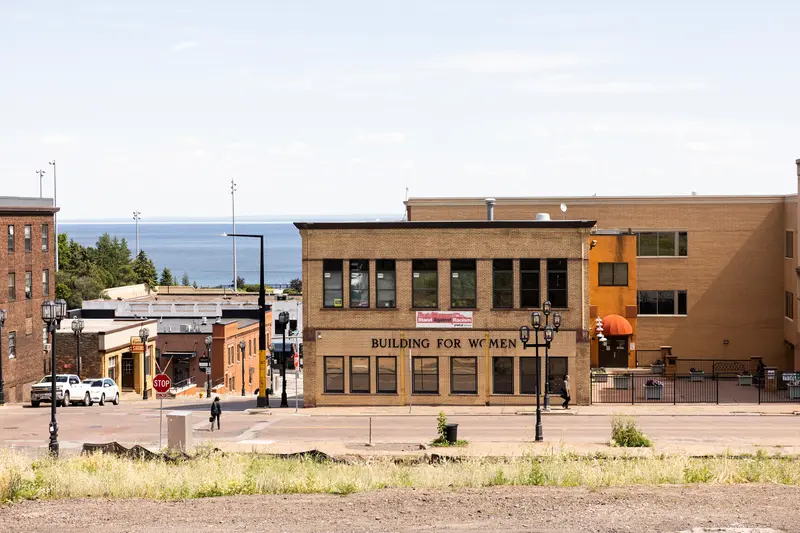
According to the state’s data, Minnesota residents seeking abortions are a fairly diverse group. From 2018 through 2021, on average, 31% of patients were Black, 9% were Hispanic, 8% were Asian and 2% were American Indian; an additional 6% were recorded as “other.” White patients accounted for 44%.
But among those coming from out of state, people of color made up a much smaller percentage on average of the patient population. White people made up 75% of out-of-state patients.
Experts say some of the disparity results from the fact that the states bordering Minnesota are predominantly white, particularly in the rural areas adjacent to the state. But this also describes Minnesota’s population. So at least some of the difference could be tied to access to transportation or money to travel.
“Minnesota is going to become a haven state, but for what percentage of people that actually need our services?” said Paulina Briggs, WE Health Clinic’s laboratory manager and patient educator. “That’s a huge thing.”
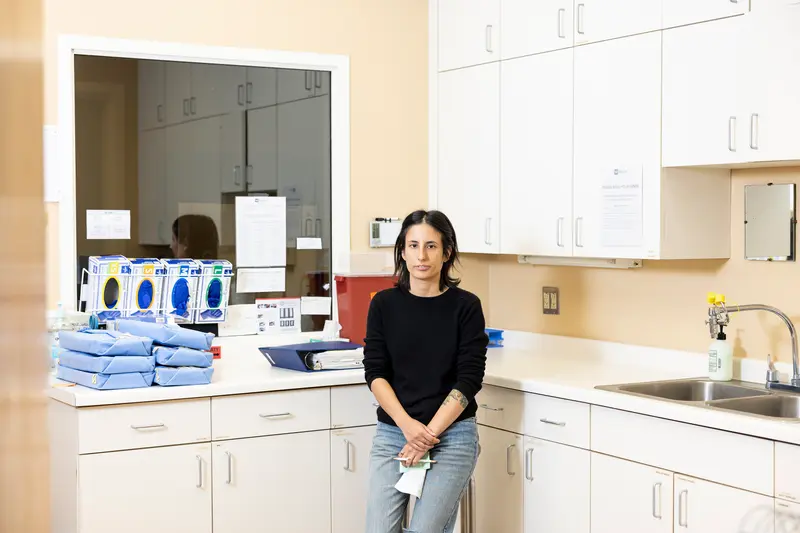
When Roe was overturned in June, the small staff at WE Health Clinic was dismayed but not surprised. In fact, it was prepared to meet the estimated 10% to 25% increase in out-of-state patients.
“We’ve anticipated this for a long time,” Briggs said. “So it’s not like sudden news to us.”
While the clinicians in Duluth may have been prepared for the end of Roe, something much more unexpected happened 2 1/2 weeks later, when a district court judge delivered a surprise ruling that expanded abortion access in the state. Ruling in Doe v. Minnesota, the judge threw out measures that included a mandatory 24-hour waiting period before abortions, two-parent consent for minors and a requirement that physicians discuss medical risks and alternatives to abortion with patients. He also tossed out a requirement that only doctors were allowed to provide abortion care, including by telemedicine, and that after the first trimester, the care had to take place in a hospital.
In contrast to the tearful scenes that played out in many clinics after Roe fell, in Minnesota that Monday morning, abortion providers and their support staff celebrated. Laurie Casey, the executive director of WE Health, was behind her long, crowded desk, doing paperwork when she first got news.
“It’s like, ‘Oh my God, is this real?’” she said. “Something good happened?”
Briggs said: “I think I audibly cheered. Like: ‘Yeah. Hell yeah.’”
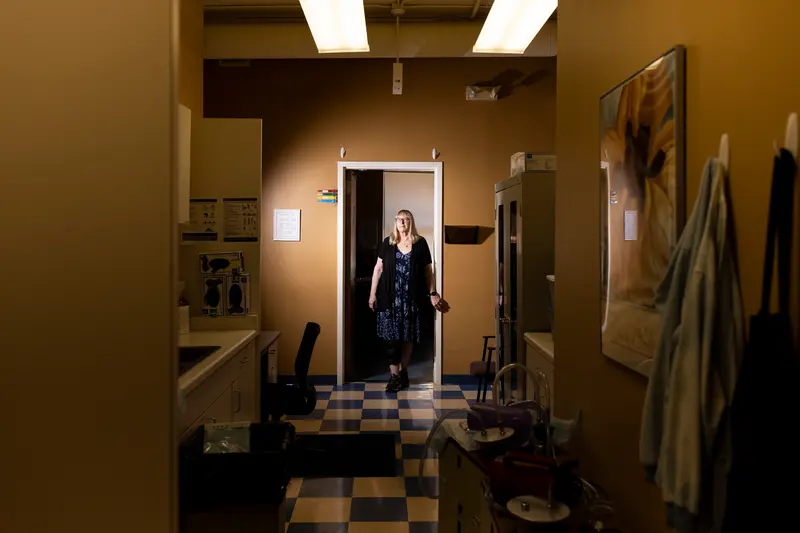
Lawyers for the plaintiffs in the Minnesota case, which was filed in 2019, had expected to go to trial at the end of August. Instead, the judge granted abortion supporters a big victory, leaving intact two measures: a requirement that abortion providers collect and report data on their patients to the state, and a law that dictates the rules for disposing of fetal remains.
Minnesota Attorney General Keith Ellison, whose office represented the state in the lawsuit, announced that he would not appeal the court’s decision. Ellison also pledged that he would not prosecute abortion-seekers from other states and wouldn’t cooperate with extradition orders from outside jurisdictions.
Minnesota Gov. Tim Walz signed an executive order making similar promises.
Both officials have made abortion access central tenets of their reelection campaigns.
In these early days of a post-Roe reality, it’s not yet clear who will need these protections, though the data can provide clues.
States track demographic data on abortion differently; according to the Centers for Disease Control and Prevention, more than two dozen publicly report the race and ethnicity of patients. Minnesota is the only access island state in the Midwest that releases those numbers; the state also separates that data into resident and nonresident figures.
Illinois is projected to accept far more out-of-state patients than Minnesota, but its health department does not release statistics about the race and ethnicity of abortion patients. Kansas allows abortion up to 22 weeks, protects the right to abortion in its Constitution and reports one of the highest rates of out-of-state patients in the country, at nearly 50% and second only to Washington, D.C. But Kansas’ state health department does not combine where patients are from with demographic data.
From 2008 to 2021, 13,256 patients who live outside Minnesota received abortion care there, an average of about 950 people a year, according to the state health department. Among that population, the racial and ethnic breakdown of patients has held fairly steady.
A number of factors play into the lack of diversity, said Asha Hassan, a graduate researcher at the Center for Antiracism Research for Health Equity at the University of Minnesota.
“There’s the obvious one that might be coming to mind, which is the effects of the way structural racism and poverty are interwoven,” Hassan said.

Caitlin Knowles Myers, a professor at Middlebury College in Vermont who studies the economics of abortion, added, “Obviously resources like ability to take time off, ability to get and pay for child care, etc., etc. — that obviously prevents poor women from making a trip.”
Then there is the cost of the procedure itself. In Minnesota, residents can use state medical assistance funds to pay for an abortion under certain circumstances; out-of-state residents cannot. According to Our Justice, a nonprofit that provides financial assistance for abortion care and travel to Minnesota, in-clinic abortion services can cost $400 to $2,000, depending on the gestational age of the pregnancy. A locally based telemedicine service and mobile clinic called Just the Pill charges $350 for abortion medication.
Shayla Walker, executive director of Our Justice, said her organization helps people work through the kinds of barriers to travel that pregnant people of color face every day. Undocumented patients, for instance, may not have a driver’s license or other form of identification, meaning that flying from states like Texas or Oklahoma is out of the question.
Of the out-of-state patients who come to Minnesota, residents from neighboring Wisconsin make up the vast majority. And like Minnesota and its neighboring states, Wisconsin is predominantly white: 80.4% of residents identified as such in the 2020 U.S. Census.
From 2008 to 2021, an average of 690 patients from Wisconsin received abortion care in Minnesota each year. The proportion of Wisconsinites has dropped over the years — in 2008, 80% of out-of-state abortion patients reported that they lived in Wisconsin, compared with 63% by 2021. Over that same period, South Dakota residents ticked up from 4% to 16%, and Iowa patients rose from 2% to 6%.
According to Myers, the lack of abortion providers in western and central Wisconsin likely drives the traffic across the border to Minnesota. These parts of the state are largely rural and mostly white. Wisconsin’s more diverse urban centers are concentrated in the southern and eastern parts of the state, much closer to the Illinois border.
“A lot of them are likely to end up heading south to the Chicago area,” Myers said. “The Chicago area also has a lot of providers and likely a lot of capacity. And the question for Minnesota is, if the Chicago area ends up unable to absorb an enormous influx of patients heading their way from all directions, then you would expect to see patients spilling over into Minneapolis.”
Leaders of the Options Fund, which provides financial help to pregnant people in rural central and western Wisconsin who are seeking abortions, said the majority of the money they provide is for care that takes place in Minnesota.
“Certainly it’s not that people of color don’t exist, of course,” said the group’s vice president, who spoke on the condition of anonymity out of concern for her safety. “But I think generally, the more rural we get, the more white it’s going to be.”
Of course, the data from Minnesota is backward-looking, from years when abortion was still legal, though restricted or sometimes difficult to access, in surrounding states. There are certain to be shifts in where patients travel from, most obviously North Dakota, where the state’s lone abortion clinic moved from Fargo to its Minnesota sister city of Moorhead, just across the border. And as reproductive rights supporters across the country respond to the end of Roe, abortion funds have reported huge increases in their donations, which may bring travel and abortion care in Minnesota within the grasp of more low-income pregnant people and people of color.
The first week after the Doe v. Minnesota decision, WE Health Clinic’s patients felt the impact. Casey said she was able to tell a mother that her minor daughter could receive an abortion without the permission of her long-absent father or from a judge. Briggs was able to schedule a next-day abortion, which would have been illegal before the judge’s decision.
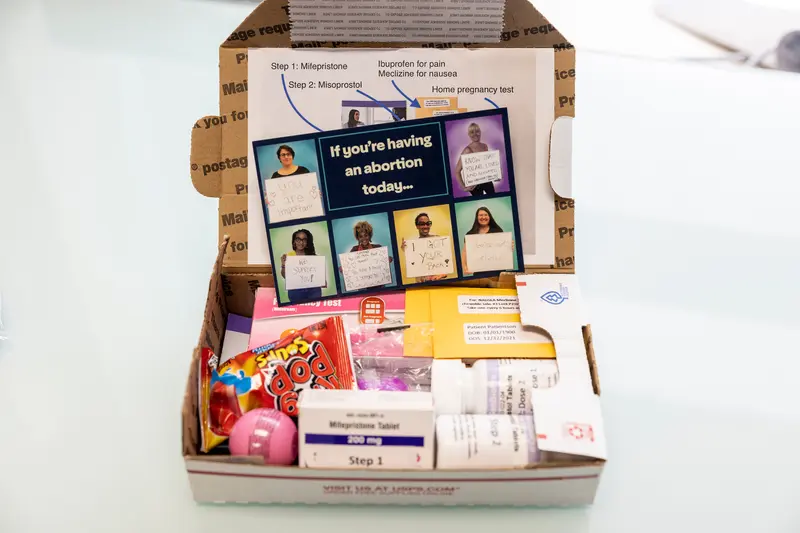
At some point, a clinic worker went through intake folders and pulled out all the forms certifying that “state mandated information” had been provided to patients. They were fed into the office shredder.
Tossing out their scripts, canceling the physician phone calls 24 hours in advance, no longer going down to the county courthouse to ask judges to grant their minor patients special permission to have an abortion — all of this will save the WE Health Clinic workers hours every week.
Beyond that, the court ruling — which abortion opponents are seeking to have overturned — has the potential to increase the number of providers, as advanced clinicians like nurse practitioners and some classifications of midwives may now be able to get training, and eventually provide abortion care and telemedicine.
This pivotal moment for abortion care in Minnesota and the country at large comes at a moment of major transition for WE Health as well. Casey is looking at retirement in the coming year, which means much of the work of adapting the clinic to serve patients in a post-Roe world will fall to her staff, including Briggs.
Briggs started working at the clinic six years ago, when she was just 23. She wanted to do this work after receiving her own abortion at WE Health as a college student, an experience she found at once “nonchalant” and “empowering.”
She is troubled by the disparities in who might be able to make it across the borders and climb the stairs of the Building for Women, to receive the kind of life-changing care that she did. Just keeping the doors open does not mean the care will be equitable.
Aug. 26, 2022: This story originally misstated the age of Paulina Briggs when she started working at WE Health Clinic. She was 23, not 21.
Haru Coryne contributed data analysis.
